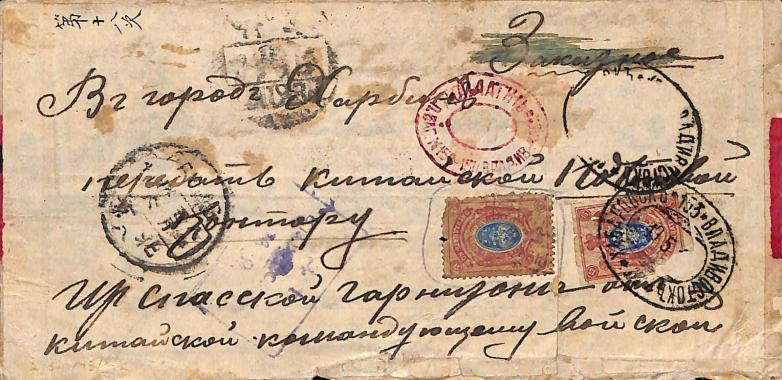Philatelic Collection Featuring Communist Rarities to Auction

An example of Chinese military mail written by a commanding officer and sent from the Spasskoe Garrison in Siberia on May 29, 1919.
Chiswick Auctions will sell the collection of a former British journalist and presumed diplomat who gained access to some of the world’s most secretive countries during the Cold War era.
From the 1950s to the 1980s, John Newell spent time in North Korea, China, East Germany, Russia, Tibet, Zanzibar, Alaska, and Panama for both work and leisure at a time when many of these areas were largely off-limits to Westerners. The collection will be sold during two auctions without reserves or estimates, with the first part being offered on Wednesday, March 1, and part two scheduled for late July.
Part One features a large number of stamps and items of postal history relating to both pre- and post-war communist countries. North Korea, Mongolia, Russia and China are very well represented. Director Matthew Caddick said, “This remarkable stamp collection boasts some extremely rare lots. In relation to the Korean stamps in particular, the collection represents both a quantity and quality that’s seldom seen on offer all in one place.”
Already generating plenty of bids is a rare example of Chinese military mail written by a commanding officer and sent from the Spasskoe Garrison in Siberia on May 29, 1919. Very little mail of this type has been recorded and this appears to be the first from the Russian Revolution period of 1917-23. The envelope was censored at Vladivostok before traveling on via Harbin to Peking, arriving on June 10.
Another lot of interest is a much-traveled postcard, depicting the French port of Boulogne, which went on a two-and-a-half month journey across the Far East in 1912. First addressed with a 10-centimes stamp to the cruiser Dupleix of the Far East Fleet, Yokohama, it was then readdressed on several occasions to Shinwantao (China), Vladivostok (Russia), Kobe and Hakodate (Japan), Swatow Tientsin and Moukden (China).
A series of postmarks franked to a letter with a 3-tugrik stamp sent from Ulaanbaatar, Mongolia, to Paris on May 11, 1927 tells a remarkable story, as does a combination cover sent from Mongolia to Peiping in November 1935. Prepaid in Ulaanbaatar with only two 15-mung stamps for inland postage, an additional 40 cents of postage was added at Kalban, Inner Mongolia that was due on arrival after its journey to China.
The remainder of the collection comprises a mixture of items and material to include propaganda, sculpture, militaria, ethnographic art and other objects amassed from a life of traveling, working and collecting.















